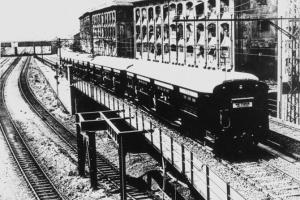There is a saving of approximately Rs 120 crore per annum in electricity bill due to conversion from DC to AC as transmission losses have reduced

Today is the day when steam engines took a back seat on India's first railway with railway electrification from Chhatrapati Shivaji Maharaj Terminus (the then Victoria Terminus) to Kalyan commissioned on 12 November 1928 with 1500-volt DC traction system. Electrification was subsequently extended up to Igatpuri in Northeast line and up to Pune in Southeast line.
ADVERTISEMENT
First passenger train Deccan Queen, with electric loco WCP-1 ran on June 1, 1930, between Bombay VT (now CSMT) and Poona (now Pune).
In 1500-volt DC system overhead equipment power was being supplied at 1500 volt from rectifier fed traction substations (TSS) normally having no sectioning. i.e. the TSS were connected in parallel. Traction Substations interspacing being very low, making fault level unmanageable and other problems. Overhead DC traction power supply system had reached its saturation level and it was very difficult to run more trains in section. The recurring maintenance cost of DC traction system was also very high. A high number of faults also occurred due to very high currents in the DC system.
The 25 kV AC system emerged as an economical form of electrification as a result of research and trials in Europe, particularly, on French Railways (SNCF). Indian Railways decided to adopt the 25 kV AC system of electrification as a standard in 1957.
Considering the limitations of the existing DC traction system, a decision was taken to convert it to 25 kV AC traction in 1996-97. Conversion from DC to AC traction of Igatpuri-Kalyan section was completed on November 12, 2006; Pune-Lonavala-Kalyan section on October 24, 2010; Kalyan-Thane section on January 24, 2014, and Thane-CSMT on June 8, 2015, on Central Railway. With this, the entire electrified mainline rail network in Central Railway uses 25 kV AC.
Due to switching over from 1500 v DC traction to 25 kV AC traction, the number of Traction substations has reduced from 21 to 4 in Kalyan-CSMT and from 72 to 18 in CSMT-Igatpuri/Pune section.
There is a saving of approximately Rs 120 crore per annum in electricity bill due to conversion from DC to AC as transmission losses have reduced, regenerative braking in three-phase EMUs and locomotives have been introduced etc.
Catch up on all the latest Crime, National, International and Hatke news here. Also, download the new mid-day Android and iOS apps to get latest updates
 Subscribe today by clicking the link and stay updated with the latest news!" Click here!
Subscribe today by clicking the link and stay updated with the latest news!" Click here!






